A little while ago I told you that I had gone to my mam’s to claim my knitting heirlooms. I had been complaining to her that I had a pile of jumpers to wash and the thought of pinning them all out again filled me with dread when she reminded me that my Nannie’s – her mam – jumper board was gathering dust, waiting to dress a jumper once more.
Jumper boards perfectly block wool garments without the pain of pin jabs or, indeed, without bending every pin in the tin, like I did with my etterscabs jumper!

Greig’s Close, Charlie Williamson and his mother Barbara, Shetland patterned allover jumper on board. 1920s. Photographer J D Rattar
As these photographs from the Shetland Photographic Archive show, jumper boards would have been used by almost every Shetland home at one time or another. As a child in the 1980s the cry was often heard, “watch the jumper board!” , as we careered about the sitting room – paying little attention to the board close (but not too close!) to the fire guard.
The board is set to the correct measurement by placing struts on the base and in the same corresponding holes along the top sleeve board (not shown in this pic as it is too long!). Then the lower sleeve boards are put in place. This board would have been able to dress jumpers from bairns to large adults.
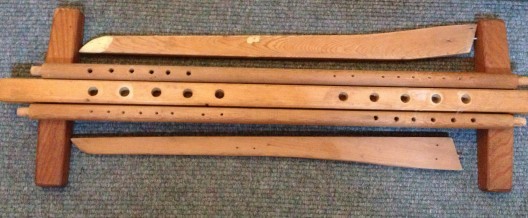
Setting it up takes a little bit of getting used to, but once you measure the distance between the holes and know how big your finished item should be it becomes a bit instinctive.
There are different types of board. All were handmade in Shetland, some by the wool brokers or mills, but also they were made in the community, like my nannie’s. You can see that it is a fairly simple design and I know that it was an integral piece of kit – particularly if you worked in the knitwear industry.
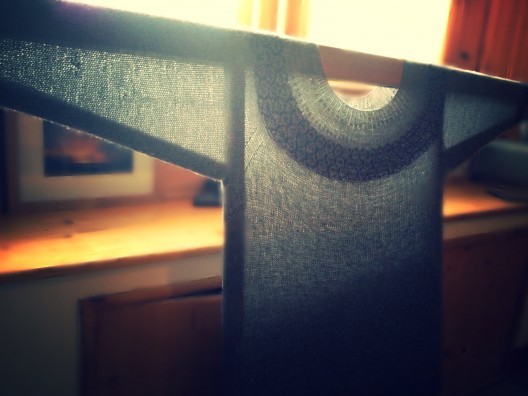
My nannie did work in the local industry – my granddad too – they both had jobs but also worked from home knitting and making up jumpers. They had a huge (huge to us kids, I suppose!) upright knitting machine, presumably one they rented or paid in instalments from the broker they knitted to.
Their machine was very similar to this one, again from the Shetland Museum and Archives website.
It must have taken up so much room in the house! I remember feeling very annoyed when it came to live at our house as our playroom became the knitting machine room. This alongside my mam’s more modern Brother-style machine, which she used to make jumpers on when the knitting industry boomed again in the 1980s.
Another piece of my knitting genealogy passed down was this item…
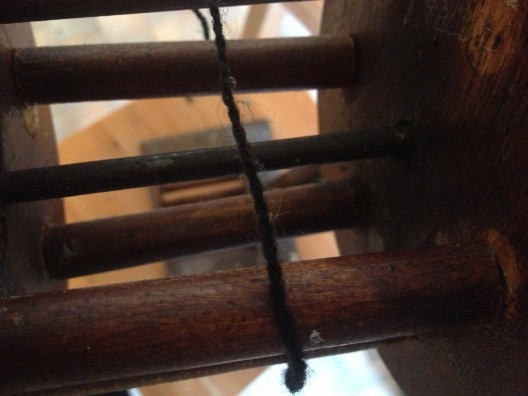
(…and that little bit of wool in there is a bit of Shetland wool from circa 1985!)
We had always called this contraption the wool winders, but thanks to a twitter chum I found out it is actually called a squirrel cage swift. This I can remember my nannie and my mam both using and – given that it has been in the loft since the mid 1980s, it needed a lot of cleaning and a bit of care to come of the dowels.
This was probably hand-made for her too. Height adjustable you place the hank over the cages and begin to unwind. I am actually unsure if I am supposed to anchor one end of the hank to the swift, but I certainly managed to get it working.
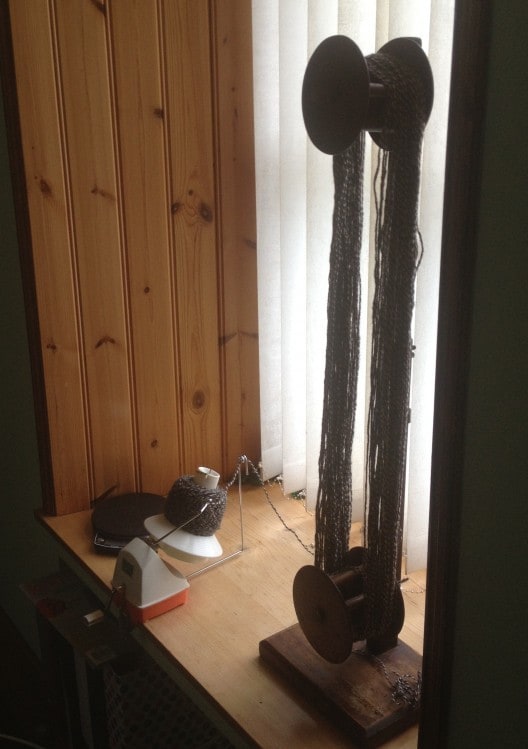
All too often we hold on to things in the name of posterity and eventually forget about them, or forget that they still have a use.
I feel very proud to have been given these things and to be able to give them a use again.

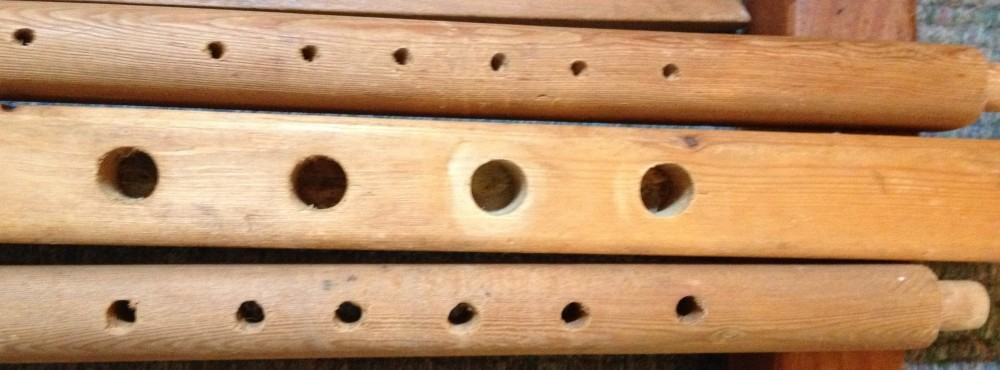


Wow, Louise! You are one lucky lady.
I have never heard of a jumper board before today and loved this post..and the images! Fantastic.
I am! I never thought of them being totally unique to shetland, but I guess they are, a little.
I have heard of them being called woolly boards or woolly horses too.
[…] my recent post about my knitting heirlooms the connections between knitting and the past kept […]